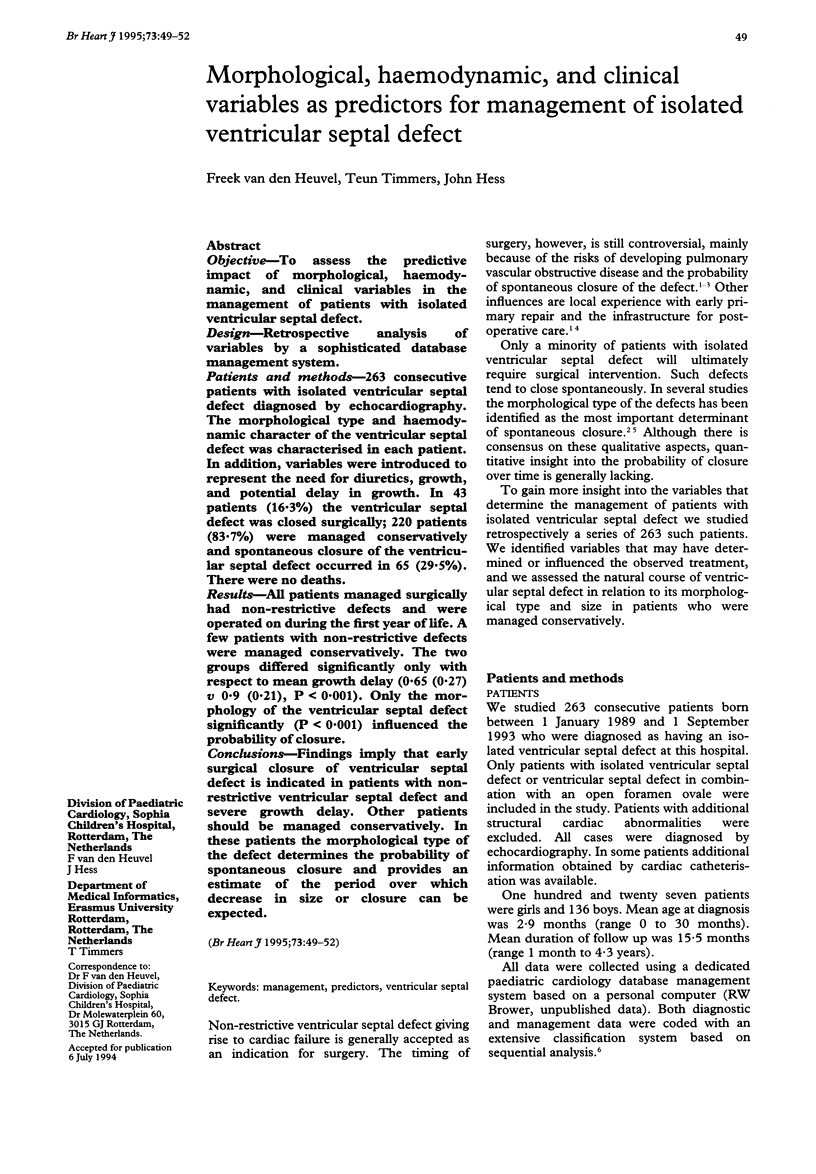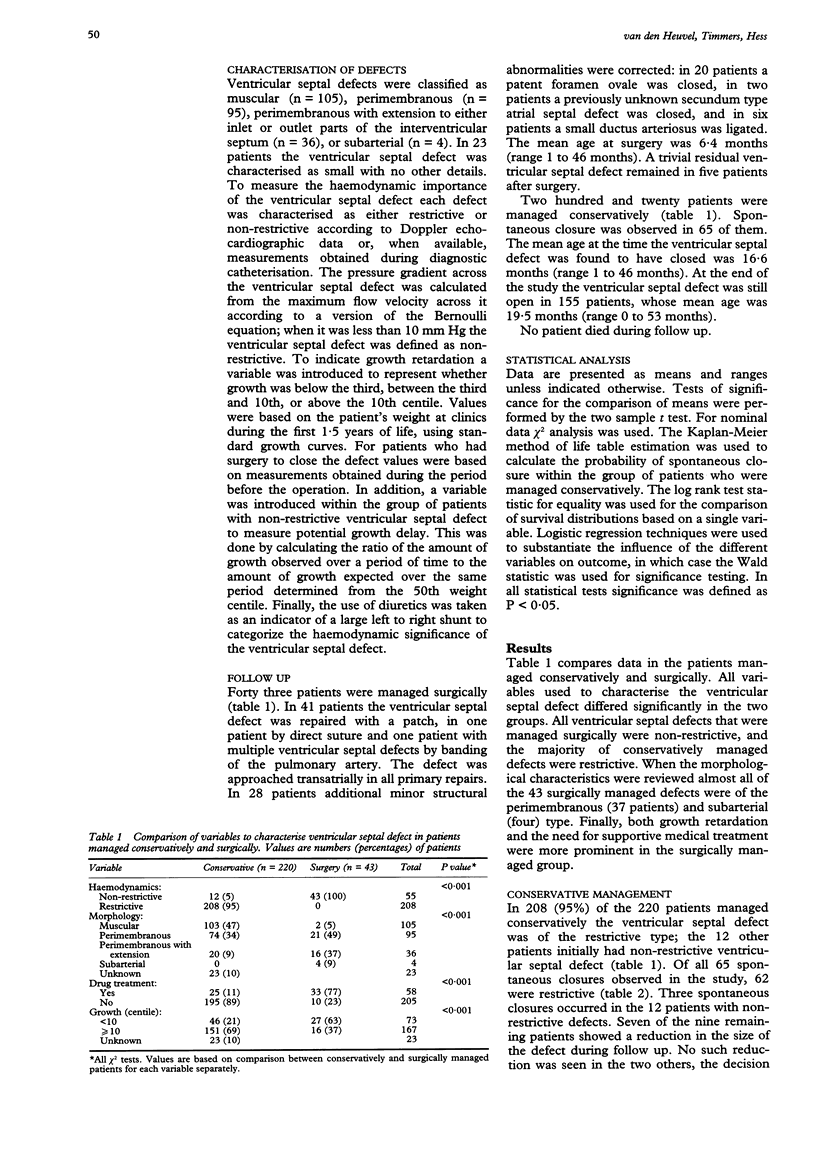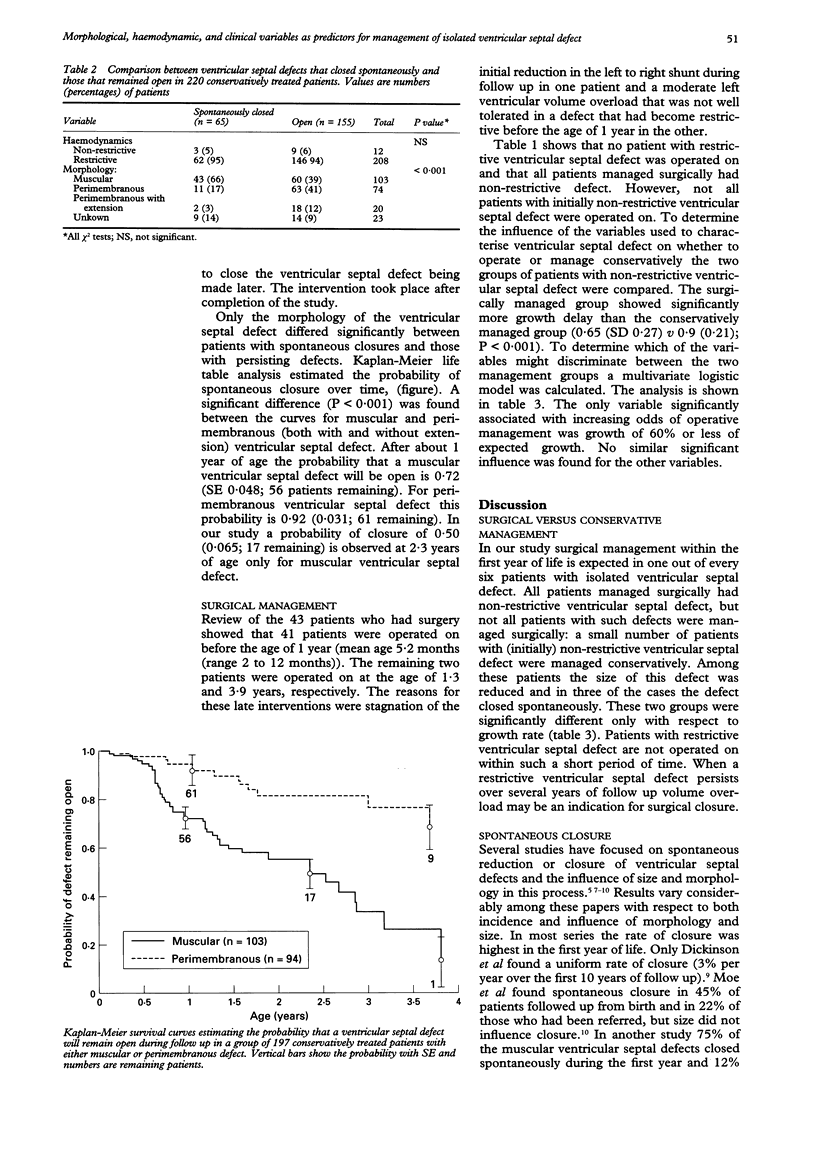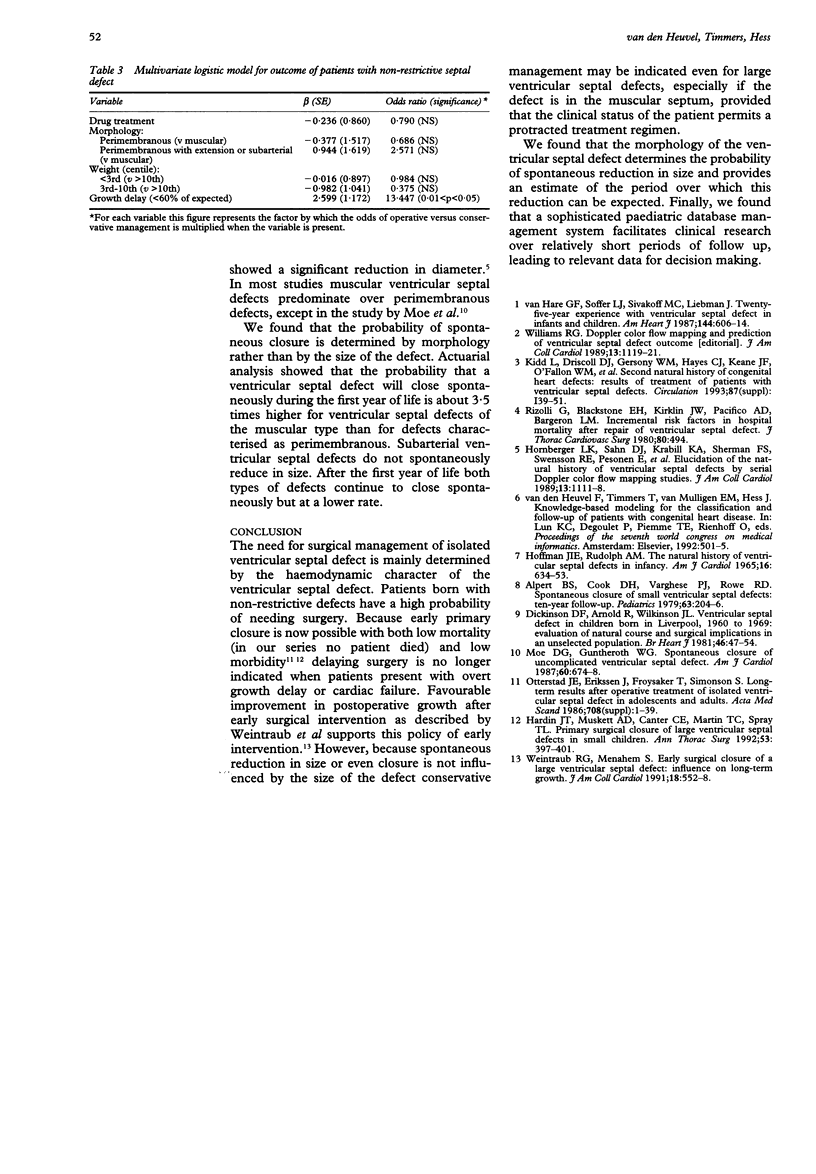Abstract
OBJECTIVE--To assess the predictive impact of morphological, haemodynamic, and clinical variables in the management of patients with isolated ventricular septal defect. DESIGN--Retrospective analysis of variables by a sophisticated database management system. PATIENTS AND METHODS--263 consecutive patients with isolated ventricular septal defect diagnosed by echocardiography. The morphological type and haemodynamic character of the ventricular septal defect was characterised in each patient. In addition, variables were introduced to represent the need for diuretics, growth, and potential delay in growth. In 43 patients (16.3%) the ventricular septal defect was closed surgically; 220 patients (83.7%) were managed conservatively and spontaneous closure of the ventricular septal defect occurred in 65 (29.5%). There were no deaths. RESULTS--All patients managed surgically had non-restrictive defects and were operated on during the first year of life. A few patients with non-restrictive defects were managed conservatively. The two groups differed significantly only with respect to mean growth delay (0.65 (0.27) v 0.9 (0.21), P < 0.001). Only the morphology of the ventricular septal defect significantly (P < 0.001) influenced the probability of closure. CONCLUSIONS--Findings imply that early surgical closure of ventricular septal defect is indicated in patients with non-restrictive ventricular septal defect and severe growth delay. Other patients should be managed conservatively. In these patients the morphological type of the defect determines the probability of spontaneous closure and provides an estimate of the period over which decreased in size or closure can be expected.
Full text
PDF



Selected References
These references are in PubMed. This may not be the complete list of references from this article.
- Alpert B. S., Cook D. H., Varghese P. J., Rowe R. D. Spontaneous closure of small ventricular septal defects: ten-year follow-up. Pediatrics. 1979 Feb;63(2):204–206. [PubMed] [Google Scholar]
- Dickinson D. F., Arnold R., Wilkinson J. L. Ventricular septal defect in children born in Liverpool 1960 to 1969. Evaluation of natural course and surgical implications in an unselected population. Br Heart J. 1981 Jul;46(1):47–54. doi: 10.1136/hrt.46.1.47. [DOI] [PMC free article] [PubMed] [Google Scholar]
- Hardin J. T., Muskett A. D., Canter C. E., Martin T. C., Spray T. L. Primary surgical closure of large ventricular septal defects in small infants. Ann Thorac Surg. 1992 Mar;53(3):397–401. doi: 10.1016/0003-4975(92)90257-5. [DOI] [PubMed] [Google Scholar]
- Hoffman J. I., Rudolph A. M. The natural history of ventricular septal defects in infancy. Am J Cardiol. 1965 Nov;16(5):634–653. doi: 10.1016/0002-9149(65)90047-0. [DOI] [PubMed] [Google Scholar]
- Hornberger L. K., Sahn D. J., Krabill K. A., Sherman F. S., Swensson R. E., Pesonen E., Hagen-Ansert S., Chung K. J. Elucidation of the natural history of ventricular septal defects by serial Doppler color flow mapping studies. J Am Coll Cardiol. 1989 Apr;13(5):1111–1118. doi: 10.1016/0735-1097(89)90270-2. [DOI] [PubMed] [Google Scholar]
- Moe D. G., Guntheroth W. G. Spontaneous closure of uncomplicated ventricular septal defect. Am J Cardiol. 1987 Sep 15;60(8):674–678. doi: 10.1016/0002-9149(87)90380-8. [DOI] [PubMed] [Google Scholar]
- Otterstad J. E., Erikssen J., Frøysaker T., Simonsen S. Long term results after operative treatment of isolated ventricular septal defect in adolescents and adults. Acta Med Scand Suppl. 1986;708:1–39. doi: 10.1111/j.0954-6820.1986.tb18124.x. [DOI] [PubMed] [Google Scholar]
- Rizzoli G., Blackstone E. H., Kirklin J. W., Pacifico A. D., Bargeron L. M., Jr Incremental risk factors in hospital mortality rate after repair of ventricular septal defect. J Thorac Cardiovasc Surg. 1980 Oct;80(4):494–505. [PubMed] [Google Scholar]
- Van Hare G. F., Soffer L. J., Sivakoff M. C., Liebman J. Twenty-five-year experience with ventricular septal defect in infants and children. Am Heart J. 1987 Sep;114(3):606–614. doi: 10.1016/0002-8703(87)90759-9. [DOI] [PubMed] [Google Scholar]
- Weintraub R. G., Menahem S. Early surgical closure of a large ventricular septal defect: influence on long-term growth. J Am Coll Cardiol. 1991 Aug;18(2):552–558. doi: 10.1016/0735-1097(91)90614-f. [DOI] [PubMed] [Google Scholar]
- Williams R. G. Doppler color flow mapping and prediction of ventricular septal defect outcome. J Am Coll Cardiol. 1989 Apr;13(5):1119–1121. doi: 10.1016/0735-1097(89)90271-4. [DOI] [PubMed] [Google Scholar]


